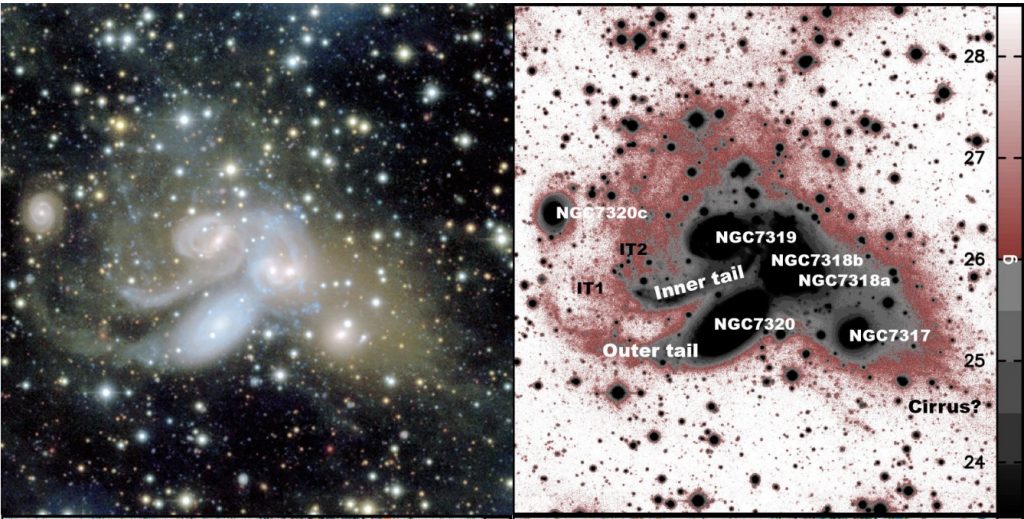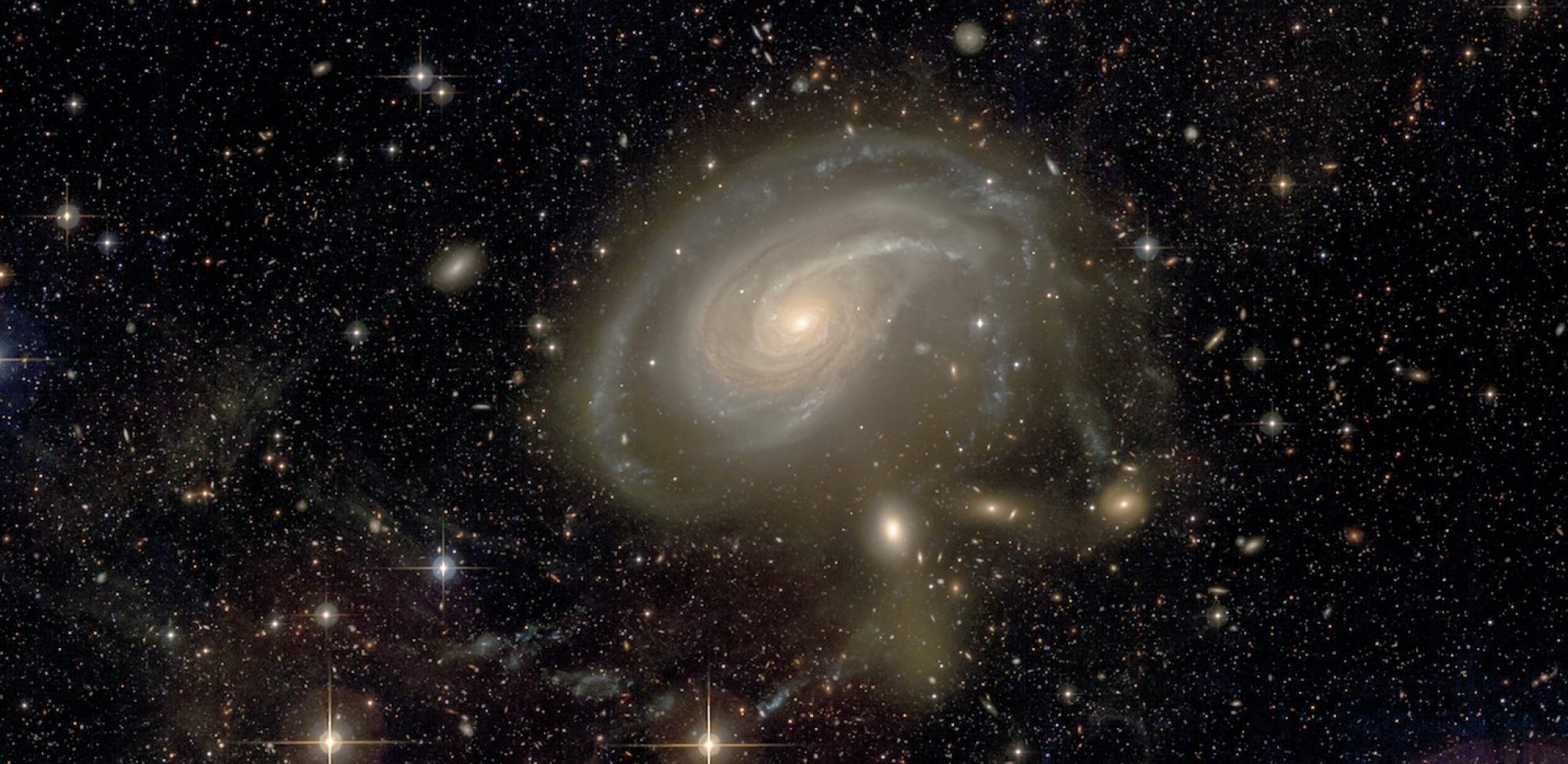
Stephan’s Quintet, a compact group of galaxies, is often used as a laboratory to study a number of phenomena, including physical processes in the interstellar medium, star formation, galaxy evolution, and the formation of fossil groups. As such, it has been subject to intensive multiwavelength observation campaigns. Yet, models lack constrains to pin down the role of each galaxy in the assembly of the group. We revisit here this system with multiband deep optical images obtained with MegaCam on the Canada-France-Hawaii Telescope (CFHT), focusing on the detection of low surface brightness (LSB) structures.
They reveal a number of extended LSB features, some new, and some already visible in published images but not discussed before. An extended diffuse, reddish, lopsided, halo is detected towards the early-type galaxy NGC 7317, the role of which had so far been ignored in models. The presence of this halo made of old stars may indicate that the group formed earlier than previously thought. Finally, a number of additional diffuse filaments are visible, some close to the foreground galaxy NGC 7331 located in the same field. Their structure and association with mid-infrared emission suggest contamination by emission from Galactic cirrus.
Published in Duc et al., 2018, MNRAS 475, L40

